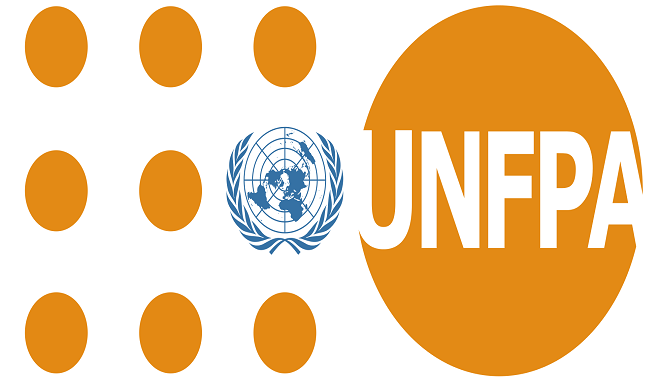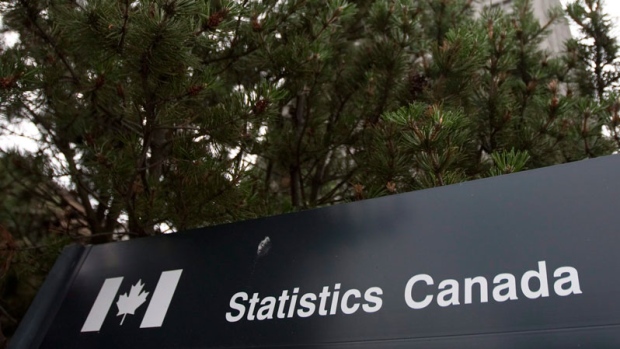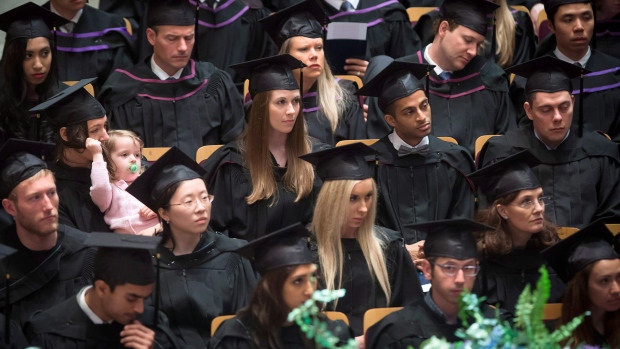América del Norte/Canada/10 de Julio de 2016/Autor: James Wilt/Fuente: CBS News
RESUMEN: La presencia indígena, al igual que con cualquier otra forma de pertenencia, es muy fluida y específica según el contexto, lo que significa que hay un sinnúmero de ejemplos de lo que dichas pluralidades culturales puedan parecerse. La Población indígena de la ciudad de Calgarians, aumento en un asombroso 75 por ciento entre 1996 y 2006, y continuará expandiéndose rápidamente en los próximos años. Y con un número igualmente creciente en el poder político, lo que tendrá un impacto significativo en la identidad y la dirección de la ciudad. Steve Kootenay-Jobin, coordinador de viviendas de los aborígenes en la Universidad de Mount Royal, señala que muchos estudiantes indígenas que se trasladan a la ciudad para la educación, recibe un choque cultural . De acuerdo con un informe de 2012 del Instituto Environics, el 51 por ciento de las personas indígenas urbanos en Calgary estan de acuerdo con la afirmación «Estoy preocupado por la pérdida de mi identidad cultural», en comparación con sólo el 34 por ciento de la población urbana no aborígenes.
Sandra Sutter and a friend were meeting for breakfast at Laurier Lounge in southwest Calgary in October when they noticed an Indigenous woman wandering around in a nearby parking lot.
A day or two prior, a man had been robbed and murdered in the same downtown parking lot.
Sutter and her friend watched to ensure the woman was safe.
«But she was also doing something,» said Sutter, co-chair of the Métis Women’s Economic Security Council and former president of the Aboriginal Friendship Centre of Calgary.
«And I know that when you look at a person like that, you’re immediately judging that person is doing drugs or something they shouldn’t be doing. But what she was doing was smudging the area and praying and laying tobacco down,» she said.
Smoke from the burning sage, a sacred plant, is used to purify. (Peggy Lam)
It may sound like a small act — a simple display of mourning and respect for the dead.
But in Calgary – 825 sq. km of concrete that covers land once predominantly occupied by buffalo, sacred medicines and 500 generations of people who hunted, fished, trapped and harvested for sustenance — such an instance represents something much more significant.
Namely, an expression of Indigenous identity within a culture that once tried very hard to erase it (and is still struggling with what reconciliation actually means.)
And thus, actively negotiating with the hotly contested idea of what it means to be an Indigenous person living in an urban environment.
In Calgary, a city contained in the traditional Treaty 7 territory of the Niitsitapi (Blackfoot Confederacy: Siksika, Kainai and Piikani), Stoney-Nakoda, and Tsuut’ina Nations.
There are no easy answers.
Indigenous population growing
The Indigenous experience, like with any form of belonging, is highly fluid and context-specific, meaning there are countless examples of what such cultural pluralities can look like.
One thing’s for sure.
The city’s Indigenous population, which jumped by a staggering 75 per cent between 1996 and 2006, will continue to rapidly expand in coming years. And with increasing numbers and political power, Indigenous people will have a significant impact on the identity and direction of the city.
As a white settler who was born in New Zealand and has lived in every quadrant of Calgary at some time or another, I asked a few Indigenous people living in Calgary what that negotiation looks like. Each have their own experiences and complex takes.
No conclusions were reached in the process. In fact, that might be the most important lesson learned.
There are no conclusions about what it means to be Indigenous in Calgary.
A member of the Stoney First Nation wears a headdress during the Stampede parade. (Jeff McIntosh/Canadian Press)
Belonging and identity
Calgary’s Aboriginal population grew from 62 to 26,575 people between 1951 and 2006.
In 2006 – the last year that census data is available — Aboriginal people made up 2.5 per cent of Calgary’s total population. Some 56 per cent of those identified as Métis, while another 41 per cent as First Nations.
Some moved to the city for jobs, others for family and even more to gain new skills and education before returning to their home territories.
Steve Kootenay-Jobin, Aboriginal housing coordinator at Mount Royal University, notes that many Indigenous students who move to the city for education, encounter culture shock.
Cynthis Bird is a Calgary based consultant, originally from Manitoba’s Peguis First Nation. (Cynthia Bird)
Cynthia Bird, who moved from Winnipeg in 2004, says it was initially difficult to find where Indigenous people gather:
«[There] you can walk anywhere or go into any business and you see our people. That wasn’t the case here. We found we had to look hard.»
Kootenay-Jobin says the cultural integration experience can be exacerbated by challenges such as racism and housing. It’s tough to start wrestling with complexities like belonging and identity when you don’t have a home.
Figuring out what culture and spirituality looks like in the context of a large city like Calgary is a matter of overlaying identities. Of identity formation.
According to a 2012 report from the Environics Institute, 51 per cent of urban Aboriginal people in Calgary agree with the statement «I am concerned about losing my cultural identity,» compared to only 34 per cent of urban non-Aboriginal people.
«Understanding the dynamics of a large urban centre if you’ve never lived in one can be overwhelming,» said Christy Morgan, the former executive director of the recently closed Calgary Urban Aboriginal Initiative.
Creating connections
The day-to-day practice of culture and spirituality looks different for every person.
Some choose to buy medicines like sage, sweetgrass, fungus and cedar from Inglewood’s Moonstone Creations to use in ceremony, or attend events such as round dances, seasonal feasts and drum-making groups.
Angela Gladue is a member of the Fly Girlz dance crew and an instructor at Pulse Studios. (Candice Ward)
Angela Gladue – a hip-hop dancer, member of the Fly Girlz dance crew and instructor at Pulse Studios – has a Cree dictionary and some language apps on her phone.
She also dances fancy shawl: «It’s pretty much the only way, even to this day, that I connect with being First Nations,» also noting she’s interested in participating in a sweat lodge in the future.
Some parents smudge and pray with their kids. Some attend the annual Tiny Tots Powwow organized by the Parent Link Centre and send their children to Piitoayis Family School (a K-6 CBE school that incorporates ancestral teachings and Indigenous language education).
Other people dry wild game like elk and deer meat in their kitchen, or meet with elders for wisdom and advice.
Returning to the land can be part of the experience.
Camille Russell, a Blackfoot elder and traditional wellness counsellor at Alberta Health Services, says he’s found that he has to return to the Blood Reserve to visit sundance grounds, sweat lodges and his father’s piece of land.
«We tend to have to go out of the city, into the nature, to get some energy,» he says. «I think a lot of the elders do have some place outside of town that they go to to do ceremonies or re-energize.»
Vanessa Stiffarm, 25, will serve as the Indian Princess for the 2016 Calgary Stampede. (Calgary Stampede)
Complex identities
But there is a multiplicity of visions even within Indigenous communities of what it means to be Indigenous in the city.
Communities such as reserves and Métis settlements allows governments to easily delineate who’s «in» and «out.» In cities, however, it becomes more difficult to draw such lines given the obvious geographic size, with Indigenous people living in every part of the city and working in every sector.
Identity can be thought of as self generated, or bestowed. Something we use to create a sense of self, or something that other’s tag us with. The reality is usually a mix of these ideas.
‘Culture and connection: these are not things you buy at a local Costco’
Cowboy Smithx
Some people argue their identity is defined by their genealogical heritage: that having ancestors who are Cree, Blackfoot, Dene, Anishinaabe, Métis or Nakota is what makes one inherently Indigenous. This as opposed to certain actions or cultural practices.
«We may have forgotten a lot, or it’s been taken away, but it doesn’t mean you’re not an Indigenous person,» says Christy Morgan, former executive director of Calgary Urban Aboriginal Initiative (CUAI).
«That’s a birthright regardless of how you look and whether or not you do traditional activities.»
Gladue notes she’s occasionally received flak from elders for her involvement in hip-hop.
«Nobody can take that away, including non-Indigenous people who say ‘Oh, you’re so Westernized or whatever.’ The fact that I’m alive is enough,» she said.
Others contend that ancestry isn’t what makes one Indigenous. For such people, it’s one’s active participation — time, energy, a commitment to traditional forms of leadership and governance — that allows one to «earn rights» to the identity.
Cowboy Smithx, film maker and creator of REDx Talks. (Arnell Tailfeathers)
«Culture and connection: these are not things you buy at a local Costco,» quips Cowboy Smithx, filmmaker and creator of REDx Talks. «There should be no sense of entitlement to any of these things. Individuals must earn these rights. They must earn this access that they seek.»
In a similar vein, Daniel Heath Justice, chair of the University of British Columbia’s First Nations and Indigenous Studies department, recently tweeted: «Indigenous belonging is more than right to ‘ethnic’ heritage — it’s relationships of obligation, citizenship, acknowledgment, reciprocity.»
Of course it’s not nearly as black-and-white as such a short summary suggests. People maintain multiple perspectives at once, weaving together a form of identity that reflects both ancestry and cultural practices.
Geography and belonging
Such tensions have been debated and written about for decades.
They are constantly revisited, recently popping up during the «marry out, get out» controversy among the Kahnawake Mohawks, or the Supreme Court ruling on the federal government’s constitutional responsibility for Métis and non-status Indians.
‘Living in town, can partially sever identity links’
James Wilt
There’s the additional nuance that for some people, where they grew up and where their home nation is are two completely different things.
Gladue, who lives in Calgary, says that when she’s asked where she’s from she says Frog Lake First Nation even though she’s never lived there. In fact, she grew up three hours west, in Edmonton. This because, as she says, «you rep your reserve.»
These sorts of complexities and nuances, these self identifications, need not be problematic. They are part of an ongoing process for Indigenous peoples.
Land is an integral part
But one thing uniting almost all perspectives is a profound connection and relationship with land. It’s a concept that commentators pushing for the «relocation» of remote communities like Attawapiskat misunderstand or ignore.
For many Indigenous people, land is the subject of a deeply reciprocal relationship that frames their entire world view, spirituality and approach to treaties and other commitments. Cultural practices, medicines, ceremonies and gatherings all revolve around it.
Hence, living «in town», can partially sever identity links.
«Our responsibility to the land and to the water and to the creatures is part of our way of looking at the world,» Sutter said. «I think ‘urban Aboriginals’ is a term in my mind that kind of means that people are cut adrift.»
Some say they have found ways to bridge that sense of dislocation.
As an elder, Camille Russell says it can be mitigated by returning home to practice ceremony and commune with the land, family and elders.
Kootenay-Jobin, who’s a member of Stoney Nation and grew up in the city’s northeast, notes he’s «very fortunate» to live away only an hour away from Morley reserve.
Still, some Indigenous people arrive in Calgary from remote communities that don’t allow for easy returns. Cynthia Bird, originally from Manitoba’s Peguis First Nation, notes that «our identity has shifted so many times from the original place» (in 1907, the Canadian government illegally annexed the original land of the Peguis people, forcing them to relocate).
NDP leader Tom Mulcair makes a campaign stop at the Sik-Ooh-Kotok Friendship Centre in Lethbridge, Alberta on Tuesday, September 15, 2015. (The Canadian Press)
That’s where the Native Friendship Centre and organizations like the Calgary Urban Aboriginal Initiative (CUAI) have historically stepped in.
Yale Belanger, associate professor of political science at University of Lethbridge and expert on the political history of First Nations people, describes such entities as an «informal network» that have worked extremely hard over the decades to promote community, language and ceremony.
Morgan dubs CUAI as a «311 for most of the Aboriginal community,» linking Indigenous people new to Calgary with resources such as housing and employment.
But CUAI closed at the end of 2015 as a result of unpredictable federal funding.
It’s a common trend
Sutter notes the provincial allotment for each of the 20 friendship centres in Alberta — $26,000 per year — hasn’t increased in over 20 years. She says that many nonprofits such as friendship centres will start a program and then the funding discontinues, requiring the dismantling of the program.
In May, the Comox Valley Record reported that 25 friendship centres in B.C. will need to shut down critical programs, with some having to close entirely.
Belanger suggests this results in people competing for limited pools of resources.
«That leads to not in-fighting per se between reserve people and urban Aboriginal people, but there’s definitely tensions and identities specific to regions start to evolve with very unique characteristics,» he adds.
And this goes back to the various Indigenous identities.
Some traditional demarcations are losing their significance.
Towards a collective identity
Russell says he meets with other elders once a month to have a pipe ceremony, debrief and share medicines. One month it will be a led by a Cree elder, the next an Ojibwe elder, the next a Blackfoot elder.
«The days of ‘I’m Blackfoot’ or ‘I’m Cree’ are kind of diminished,» he observes. «It’s to the point where we need to help each other to maintain whatever we have left.»
Kootenay-Jobin dubs email lists and social media the «moccasin telegraph,» a phrase that Sioux writer Vine Deloria, Jr. popularized. It’s a process through which news and event notifications are passed from community member to community member.
Dancers at Calgary’s inaugural Artsdance in June 2016. (Calgary Arts Development)
Such dialogues culminate in the creation of events like the Making of Treaty 7 theatre production and the inaugural Artsdance.
The latter was an elder-led gathering hosted at Mount Royal University on June 23 that included the raising of four tipis (representing the four quadrants of the city), dinner and conversations about what a full-scale Artsdance will look like next June.
Smithx — director of the Iiniistsi Treaty Arts Society, which is coordinating Artsdance — suggests such events serve as beacons to other Indigenous people to let them know that they’re not alone, and that many people in Calgary still have connections to community and culture in spite of generations of trauma, displacement and racist policies.
«Our generation does these things so the next generation can still have access to them,» he concludes.
If such efforts are any indication, the next generation will indeed have access to such practices.
There will be accountants, bluegrass singers, salespeople, contemporary dancers, steel workers and nurses contained in that mix.
Each will develop their own understanding of what it means to be Indigenous while living in the sprawling metropolis of Calgary via ceremonies, interactions with elders, the fostering of community and the speaking of Indigenous languages.
For a great resurgence is happening. It will stumble over roadblocks like racist landlords, underfunded services and geographic separation from ancestral home territories. But it will grow, adapt and innovate, just like Indigenous people always have.
And it will help define the future of Calgary.
Fuente: http://www.cbc.ca/news/canada/calgary/indigenous-first-nation-culture-1.3651039













 Users Today : 95
Users Today : 95 Total Users : 35403288
Total Users : 35403288 Views Today : 124
Views Today : 124 Total views : 3332563
Total views : 3332563